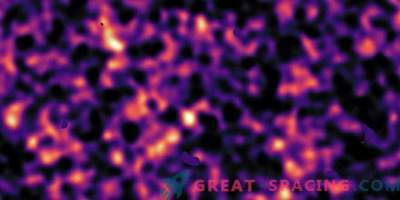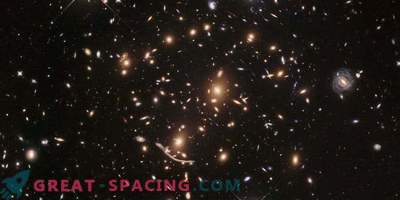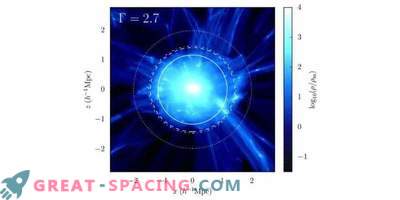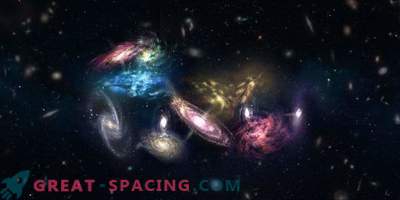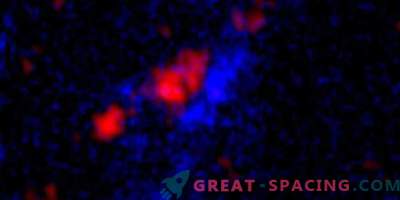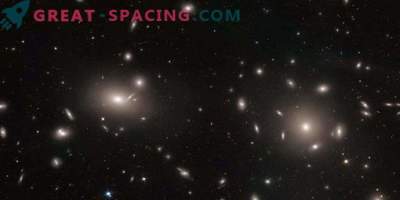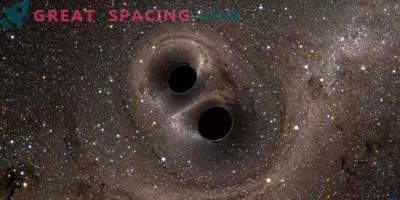
The structure of the universe can be compared with a sponge, where everything is arranged as a network. The matter is concentrated along the threads, which intersect with each other, forming zones where most of the matter accumulates, and others, where it is very small. At the densest points, galaxies cluster together, creating clusters. These systems, capable of containing thousands of galaxies, are the most massive ecumenical structures.
The study of the space network is one of the modern astrophysical problems. The properties of the main components of matter at these scales are not well known, so scientists use terms like “dark matter” and “dark energy”. The first one takes about 20% of the mass of the Universe and is what preserves the structures connected by their own gravity (acts as glue). The second covers 75% of the universe and is associated with the process of expansion of space. “Normal” matter (galaxies with stars, gas and dust) is only 5%, but plays an important role in tracking the forces and properties of dark matter and dark energy.
Recently, an international team of scientists discovered one of the most dense galactic clusters. We are talking about PSZ2 G099.86 + 58.45, whose outer zones were analyzed within a radius of 90 million light years. The environment surrounding the clusters includes other structures, such as threads and other neighboring clusters, as well as material entering the center. The analysis showed that the density of the substance around the cluster under study is 6 times greater than expected.

The research work is based on the effect of gravitational lensing, carried out when the mass of a cluster and its surrounding material bends light from distant galaxies, changing the shape of their images. The denser and concentrated the body (lens), the more distorted the background galaxies. Statistical study of the deformation for more than 150000 background galaxies made it possible to calculate the mass, distribution, and density around the cluster PSZ2 G099.86 + 58.45.
Existing models provide good opportunities for the density of matter in the inner regions of galactic clusters at a distance of 15-20 million light years, but in the outer regions they need an additional component to fit the observed data. Using the OSIRIS spectrograph, scientists conducted spectroscopic observations in the PSZ2 G099.86 + 58.45 cluster. By measuring the speed of galaxies, you can determine the total mass of the cluster.
The analysis showed that we have an extremely massive and dense galactic cluster, and the effects of a powerful gravitational field extend to enormous distances from the center (they exceed the predictions of the models). This region is able to provide important information about the formation and evolution of the most massive ecumenical structures.
